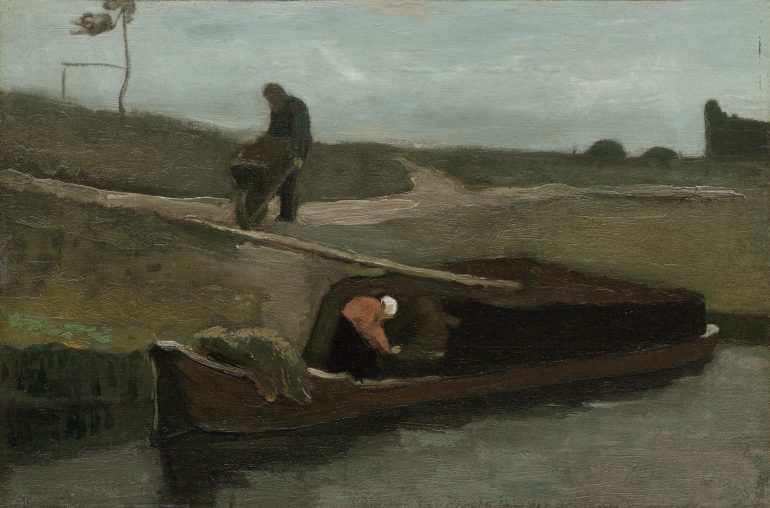Travelling with Vincent takes you along on Van Gogh’s Drenthe adventure and follows his wanderings through the North Netherlands of 1883. In the exhibition as many works as possible from the Drenthe oeuvre of Vincent van Gogh (1853-1890) can be seen together for the first time. Travelling with Vincent – Van Gogh in Drenthe can be seen in the Drents Museum in Assen from Monday 11 September 2023 to Sunday 7 January 2024.
On Tuesday 11 September 1883 – exactly 140 years ago, this year – Vincent van Gogh (1853-1890) boarded the last train from The Hague to Drenthe. He stayed in Hoogeveen for a few weeks and then moved to Nieuw-Amsterdam and Veenoord, where he painted The Peat Boat and Peasant burning weeds, among other things. He also made a day trip to Zweeloo. His letters show that he produced a large number of works during his stay, but most of them have been lost.
Exclusive oeuvre
In addition to sixteen watercolours and drawings, only six paintings from the Drenthe period are known today. Over the past eight years, the Drents Museum has conducted extensive research into Vincent van Gogh’s Drenthe period. The exhibition Travelling with Vincent features sixteen Drenthe Van Goghs, alongside works he made both before and following his Drenthe period.
A new landscape
For the relatively unknown watercolour Landscape with a farm, for example, Vincent van Gogh used a phenomenal colour palette. The work foreshadows the later rich colouring for which Van Gogh is known. As far as we know, this watercolour has not been shown in a museum presentation before.
Sprouting in the soil of Drenthe
The Drenthe period in Van Gogh’s oeuvre is of great significance. During his journey through Drenthe, Vincent went through major developments as a person and an artist. There he had the time and space to reflect on his artistry and experiment with techniques. Travelling with Vincent shows work by the sources of inspiration he mentions in the letters to his brother Theo, such as Jacob van Ruisdael, Jules Dupré and Jean-François Millet. Contemporaries such as Anton Mauve and Anthon van Rappard are also represented in the exhibition.
Van Gogh’s Drenthe oeuvre travels the world
Bringing together Van Gogh’s Drenthe oeuvre has not been easy. The works are often fragile and scattered among collections in countries around the world or sometimes have unknown whereabouts. The exhibition comes about thanks to loans from a large number of museums, including the Van Gogh Museum, Kröller-Möller Museum, Rijksmuseum, Musée d’Orsay (Paris) and Museo Soumaya (Mexico City) and private lenders.
Unknown chapter written after 140 years
The exhibition will be accompanied by a publication in both a Dutch and an English edition, published by Waanders Uitgevers. In this book, Annemiek Rens delves into what for decades has been the least known chapter in Vincent van Gogh’s well-known life story; the Drenthe period.
For more information and tickets: www.drentsmuseum.nl
